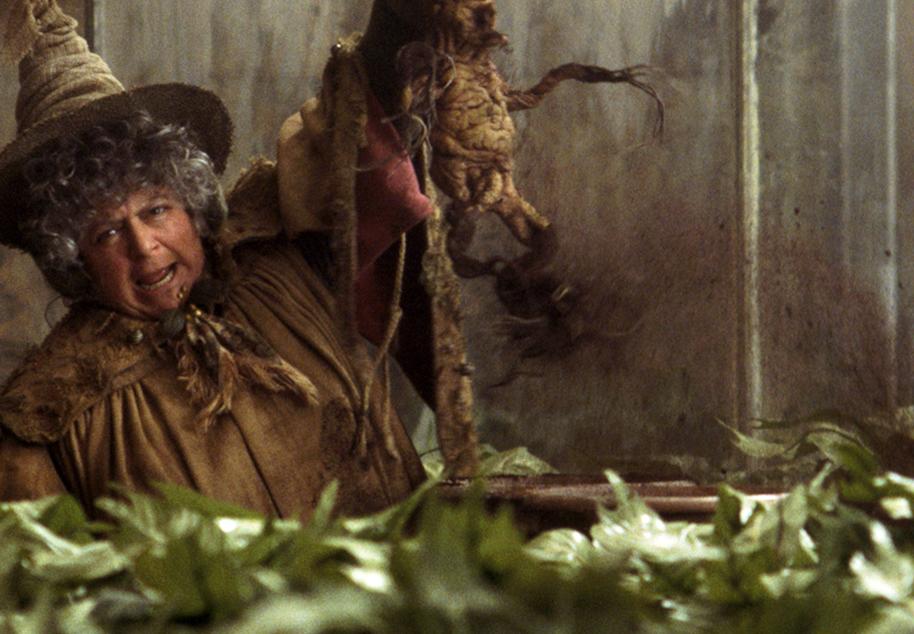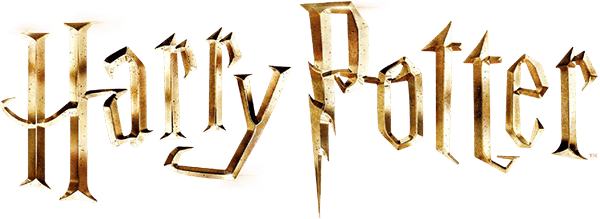Spoiler warning! There are some mild spoilers ahead – turn back now if you’re not familiar with the books…
With Herbology a core subject at Hogwarts, it’s easy to assume that there are lots of weird and wonderful magical plants – and that assumption would be correct! Yet, as well as plants that you can only find in the wizarding world, witches and wizards also have a deep understanding of the magical properties of plants Muggles grow too. We’ve rounded these all up…
Asphodel
We’re kicking off our list with asphodel – a plant present in the Muggle world too. Yet, we doubt Muggles used its powdered root to make a sleeping potion so powerful it is known as the Draught of Living Death.
Belladonna
Oh look, another plant that is found in both magical and Muggle worlds. We might know belladonna as a highly poisonous plant, but it was also a potion ingredient used by witches and wizards. Probably quite frequently too – seeing as Mrs Weasley had to top up Harry’s supply for his potion-making kit before his fourth year began.
Bouncing Bulbs
You can probably guess what these are – plant bulbs that bounce! You need to make sure you have a good grip on them though… they wriggle. Harry discovered that in a tense Herbology lesson when one bounced so enthusiastically it smacked him right in the face – ouch!
Bubotuber
Described by Harry as the ‘ugliest plants he had seen’, Bubotubers resemble ‘thick black giant slugs, protruding vertically out of the soil’. To add to this gross visual, they also have swellings that move and are full of pus. Yes, we did say pus. Though don’t judge a book by its cover, these plants are as useful as they are disgusting. The pus is valuable and when distilled, can be used an effective cure for the most stubborn forms of acne. Though undiluted, it can cause horrible sores on your skin – as Hermione Granger painfully discovered.
Daisy
In the Muggle world, daisies are considered weeds – if rather pretty. However, in the magical world, the roots of a daisy are used as an ingredient in the Shrinking Solution recipe.
Devil’s Snare
Devilish by name and devilish by nature, this is one of the more dangerous plants of the wizarding world – thanks to its tendency to trap victims in its tentacle-like vines. Though, as Hermione remembered in the nick of time, there is a way to escape its deadly grip. Devil’s Snare thrives in the dark and damp and will recoil at light and warmth. A well-placed flame will see a sharpish retreat.
In this image:
Dittany
Another plant species that straddles both the magical and Muggle worlds. In the wizarding world, the healing properties of dittany are very valuable – the Essence of Dittany potion can help to quickly heal wounds and can even reduce scarring. It was very lucky that Hermione had a bottle in her amazing, beaded bag when Ron Splinched himself.
Fanged Geranium
We all know geraniums as beautiful and vibrant flowers but in the magical world, they have more of a bite. Yep, these were geraniums with teeth – one even bit Harry in his Herbology O.W.L.
Flitterbloom
We don’t know much about this magical plant – except that it bears a resemblance to Devil’s Snare. However, this one is nowhere near as deadly, so it is important to not get them muddled up.
Flutterby Bush
There’s nothing quite as peaceful or serene as watching leaves ripple on a gentle breeze. With a Flutterby Bush, this is a permanent occurrence. An attractive bush whose leaves flutter constantly – no wind needed!
Fluxweed
This plant was one of the ingredients that could be found in Polyjuice Potion. According to J.K. Rowling, it represents ‘the mutability of the body as it changed into another’.
Gillyweed
How does a human hold their breath underwater for an entire hour? Well, one way to do that is by eating Gillyweed – vividly described as looking like a ball of ‘slimy, greyish green rat tails’. When eaten raw, this magical plant causes a person to grow gills and webbed hands and feet. Let’s just say if you every find yourself in a Triwizard Tournament, it might be useful to keep some on hand.

Gurdyroot
This plant resembles a green onion and is rather popular with the Lovegood family – they love a cup of their homemade Gurdyroot infusion. We’d describe it as an acquired taste… Harry, Ron and Hermione would call it disgusting.
Hellebore
Another flower admired by Muggles and magical folk, two drops of the syrup of hellebore is needed to create a Draught of Peace.
Honking daffodil
Daffodils in the Muggle world are bright, yellow and a reminder spring has sprung. What they aren’t is noisy. The same can’t be said for their wizarding counterparts – or at least for the honking daffodils found in Professor Sprout’s greenhouse.
Knotgrass
Found in both the magical and Muggle worlds, knotgrass is another Polyjuice Potion ingredient and supposedly represents being tied to another person.
Lovage
In the Muggle world, lovage is a herb used in cooking and is even known to have medicinal properties. In the magical world? It is an ingredient that can often be found in Confusing or Befuddlement Draughts as it appears to be effective for ‘inflaming the brain’.
Mallowsweet
When Firenze took the post of Divination teacher at Hogwarts, he bought a unique perspective – thanks to being a centaur. Through him, we learnt that the centaurs often burn herbs and leaves – Mallowsweet included – observing the fumes and flames in an attempt to gain insight into the future through.
Mandrake
While Mandrakes exist in the Muggle world, we doubt they are quite as memorable as the wizarding version. These shrubs, which resemble crying babies when young, have a wail that proves to be fatal once they reach maturity. Despite their deadly disposition, they are also used for healing and are a key ingredient in the Restorative Draught which cures Petrification. Complex but useful – just don’t forget your earmuffs!

Mimbulus mimbletonia
As a budding Herbologist, Neville Longbottom was thrilled when his Great Uncle Algie presented him with a Mimbulus mimbletonia all the was from Assyria. Harry couldn’t quite understand his joy – describing this pulsating plant as having ‘the rather sinister look of some diseased internal organ’ (they do say beauty is in the eye of the beholder). Do watch out for this plant’s defence mechanism though. It has a nasty habit of spraying Stinksap – it smells just as nice as it sounds.
Plangentine
This is one wizarding plant that eludes us. We know that Bathilda Bagshot grew them in her garden. We know that she picked them at moonlight. Plus, we know that she did this during winter. Beyond that? They’re a mystery.
Puffapod
Harry, Ron and Hermione tended to this plant during a Herbology lesson, where they stripped it of its fat, pink pods and emptied the beans into a pail. Unfortunately, butterfingers (also known as Ron) dropped a bunch of beans onto the floor where they immediately burst into bloom.
Rue
After Ron had a teeny tiny mishap with some poison, this plant had its moment to shine. Essence of Rue was a key component to his recovery.
Sage
This Muggle herb was another that Firenze burned when he asked Harry and his classmates to try and read the symbols and shapes that appeared in the smoke.
In this image:
Scurvy-grass
Alongside lovage, scurvy-grass is another plant that is a key ingredient in Confusing or Befuddlement Draughts that cause hot-headedness and reckless behaviour.
Self-fertilising shrubs
There’s not a lot we know about these shrubs, except we assume that they do what they say on the tin and Harry, Ron and Hermione once had to write an essay on them for Professor Sprout.
Shrivelfig
Originating in Abyssinia, Shrivelfigs were magical plants that second-year Herbology students attended to. They were also used as in ingredient in potions such as Shrinking Solution.
Snargaluff
At first glance, the Snargaluff plant resembles a gnarled stump. On closer inspection, they reveal long, bramble-like vines that have a habit of lashing out. They also have some rather delightful pulsating, green pods that contain tubers like pale-green worms… Funnily enough, those proved to be rather handy when under attack.
Sneezewort
This happens to be the final plant that we know is needed when creating Confusing or Befuddlement Draughts.

Sopophorous Bean
We assume that a Sopohorous Bean comes from some sort of Sopophorous plant. Anyway, this bean is used in the creation of the Draught of Living Death. Handy hint – crush rather than chop the bean for a more successful potion.
The Whomping Willow
Arguably the most famous of wizarding plants, this was a willow tree with a feisty personality. Get too close and you would feel the wrath of its branches whipping towards you. It did sustain a little bit of damage when it took on a flying Ford Anglia that rudely crashed into it, but this was a tree you’d probably want to give a wide berth.
Venomous Tentacula
This spiky, dark red plant had long creeping feelers that have been known to try to strangle the odd Herbology student (a quick Severing Charm sorts that out though). Not content with its villainous vines, this plant also has a venomous bite, poisonous shoots and some spikes for good measure. We know Fred and George coveted the seeds for their Skiving Snackboxes but had issue getting hold of them – what with them being a Class C Non-Tradeable Substance and all.
Wormwood
The final plant on our list, wormwood is found in both the magical and Muggle worlds. Add powdered root of asphodel to an infusion of Wormwood and you get the Draught of Living Death.




